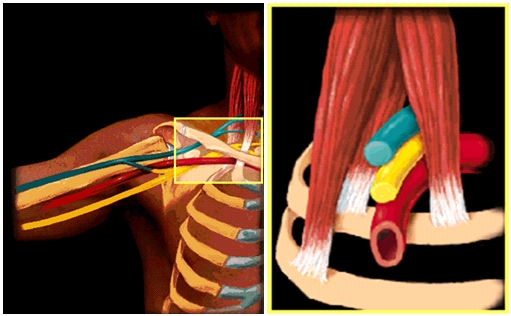Kjetil Larsen's work on the rehabilitation of cervical muscles is extensive. I have had a couple of consultations with him and have been successful in changing my posture to a more optimal one over the past six months,
Mainly, I have been able to eliminate the bump (or "cervical hinge") at the base of the cervical spine and correct forward head posture by having a long neck as shown in
@sb4 's second picture.
Here is Kjetil's video on how to correct the cervical hinge:
One important thing is that you should NOT be tucking your chin. So try to emulate the second picture in
@sb4 's post (where you can clearly see that the woman is not tucking her chin) and ignore the first picture which recommends that you tuck your chin.
If you really want to go in depth on this topic then you should read Kjetil's articles like this one:
https://mskneurology.com/how-truly-treat-thoracic-outlet-syndrome/
I have been re-reading these articles several times as the medical jargon is hard to parse, but these are absolutely the most informative resources that I have found on this topic.
------------------------------
Personally, I am also in the process of rehabilitating several neck muscles using specific exercises for each of the following muscles:
scalenes, trapezius, longus capitis, levator scapulae, SCM and suboccipital muscles. You can find exercise videos on each of these muscles on Kjetil's channel.
(I have hyperlinked the scalene exercise video above, the others are searchable)
I have tremendous weakness of the scalene muscle (I can only manage to do one rep twice a week). Kjetil is fairly confident that I have
Thoracic Outlet Syndrome (TOS), and I intuitively inclined to agree due to how difficult the scalene muscles are to work out. If I overdo the exercise, my fatigue is greatly exacerbated, so I have to do it slowly and gently.
It's important to note that I never would have realized how weak the scalene muscle was until I performed the exercise specifically meant to work it out, since the body has learnt to generally never activate this muscle. Upon this realization, my suspicion of TOS was greatly heightened, even though I had none of the obvious TOS symptoms like shoulder pain.
-------------------------
Kjetil is not a doctor, but he IS a researcher in the process of getting his medical degree. To my layman's eye, his research is really good and cutting edge. He is the author of the only paper I can find that links TOS to cerebrovascular hyperperfusion (oversaturation of the brain with blood):
https://www.apicareonline.com/index.php/APIC/article/view/1230/2037
Cerebrovascular hyperperfusion (which leads to IIH) is of course linked to ME/CFS by Dr Higgins' paper:
https://pubmed.ncbi.nlm.nih.gov/28735654/
---------------------------
My
tentative personal opinion is that if you have mild to moderate CFS/ME, and have been cleared of cervical instability by neurosurgeons like Dr. Gilete or Dr. Bolognese, then an alternative cause of IIH (idiopathic intracranial hypertension) could be an important consideration.
The two other causes of IIH could either be:
1.
Venous pathology: For example, bilateral obstruction or constriction of the transverse sinus veins. This can usually be treated with stents. Dr. Kenneth Liu's work on this is quite extensive.
2. Arterial TOS: This is caused by weakness of the scalene muscle. A weak muscle is a tight muscle, causing a narrowing of the subclavian artery by compressing it between the collarbone and the first rib. This diverts the blood that is supposed to go into the arm into the brain instead, oversaturating the brain with blood and causing IIH.
Treatment options can either be slowly and carefully rehabilitating and strengthening the scalene muscle (along with other neck muscles) over a couple of years. I am personally attempting this, by doing these exercises twice a week.
If this conservative option is too difficult, then the surgical treatment for arterial TOS is scalenectomy with first rib resection (
https://acronyms.thefreedictionary.com/FRRS), where the scalene muscle is cut and part of the first rib is removed, freeing the subclavian artery.

